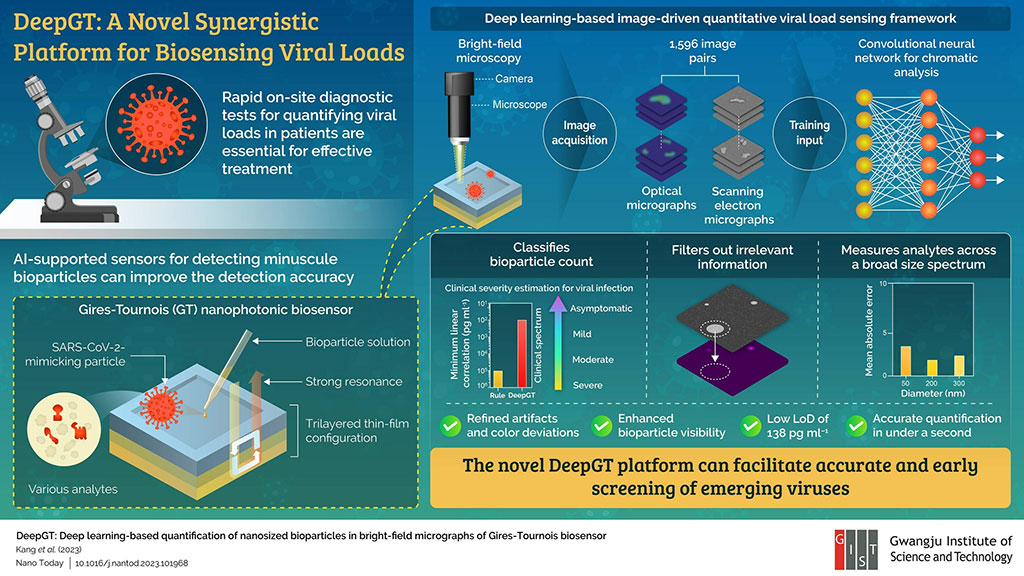Novel Synergistic Platform Accurately Detects Viruses at Lowest of Concentrations
Posted on 23 Oct 2023
Rapid and on-site methods for detecting and quantifying viruses are crucial for both treating infected individuals and controlling the spread of the disease. The COVID-19 crisis has underscored the need for dependable, yet easily accessible tests that eliminate the complicated and lengthy procedures associated with traditional lab-based diagnostics. Bright-field microscopic imaging is a commonly used point-of-care technology for quantifying viral loads. However, the tiny size and low refractive index of viruses and similar bioparticles can make accurate detection challenging, and increase the lowest detectable concentration of viral load. While Gires-Tournois (GT) biosensors—nanophotonic resonators—have shown promise in detecting small virus particles, their utilization has been limited by issues like visual artifacts and non-reproducibility.
In a recent breakthrough, an international team of researchers, led by the Gwangju Institute of Science and Technology (GIST, Gwangju, Korea) turned to artificial intelligence (AI) to resolve this issue. They introduced a combined biosensing technology named "DeepGT." This technology combines the strengths of GT biosensors with deep learning algorithms to accurately quantify nanoscale bioparticles, such as viruses, without the need for complex sample preparation. Specifically, the team engineered a GT biosensor with a three-layer thin film design and treated it so it could detect color changes when interacting with targeted materials. To confirm its capabilities, they simulated the interaction between host cells and a virus using particles designed to resemble the SARS-CoV-2 virus.

Further, the team trained a convolutional neural network (CNN) using more than a thousand optical and scanning electron micrographs of the GT biosensor surface with different types of nanoparticles. Their findings revealed that DeepGT was not only able to refine visual artifacts common to bright-field microscopy but also could glean essential details even when the viral concentration was as low as 138 pg ml–1. Additionally, the system calculated the number of bioparticles with significant accuracy, noted by a mean absolute error of just 2.37 across nearly 1,600 images, compared to a 13.47 error rate for traditional rule-based approaches—all within a second's time. The CNN-enhanced biosensing system could also gauge the seriousness of the infection, from asymptomatic cases to severe ones, based on the viral load. Thus, DeepGT offers a speedy and exact method for virus detection across a wide range of sizes without being restricted by the inherent limitations of visible light diffraction.
"We designed DeepGT to objectively assess the severity of an infection or disease. This means that we will no longer have to rely solely on subjective assessments for diagnosis and healthcare but will instead have a more accurate and data-driven approach to guide therapeutic strategies," said Professor Young Min Song from GIST. "Our approach provides a practical solution for the swift detection and management of emerging viral threats as well as the improvement of public health preparedness by potentially reducing the overall burden of costs associated with diagnostics."
Related Links:
GIST













